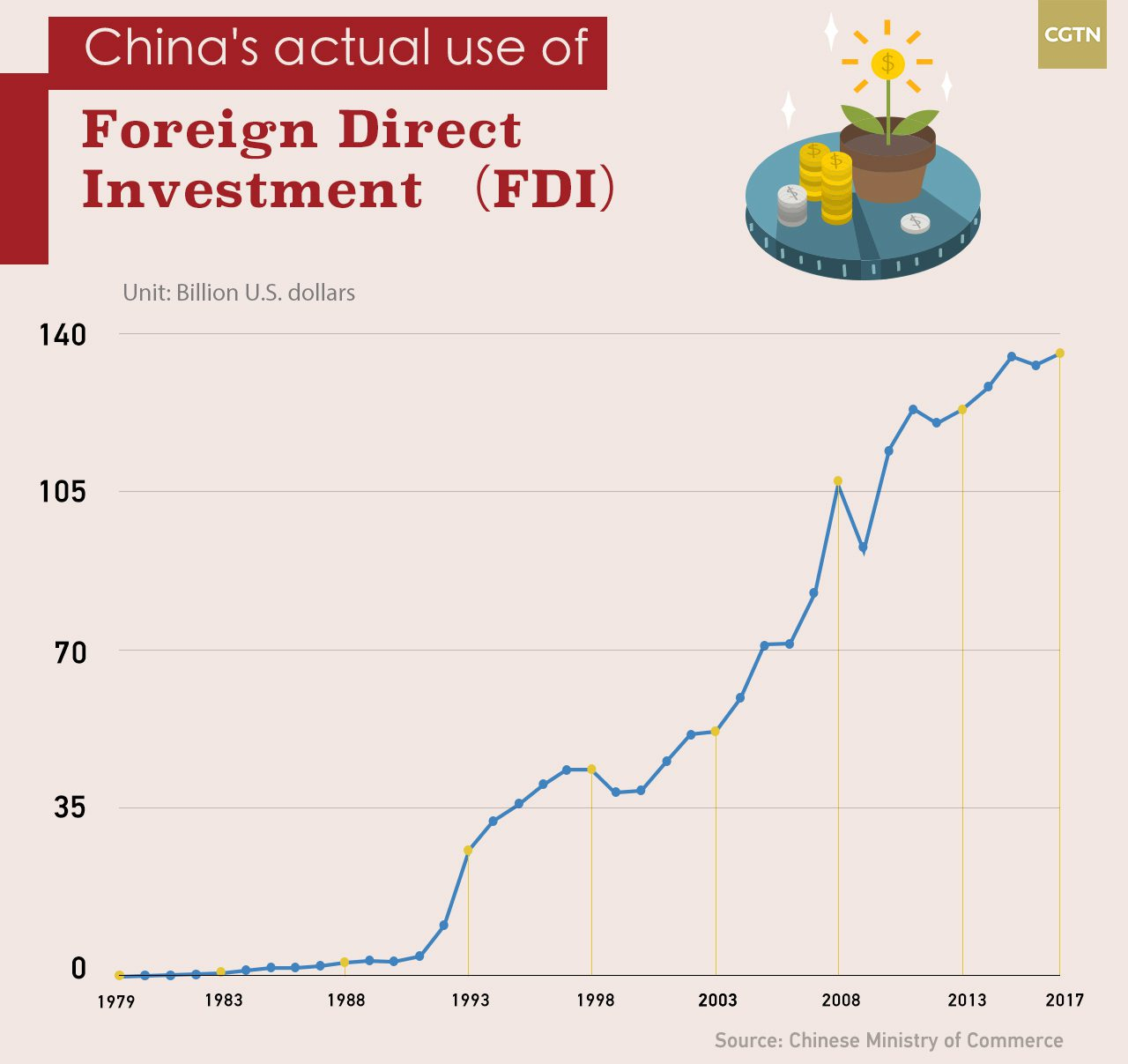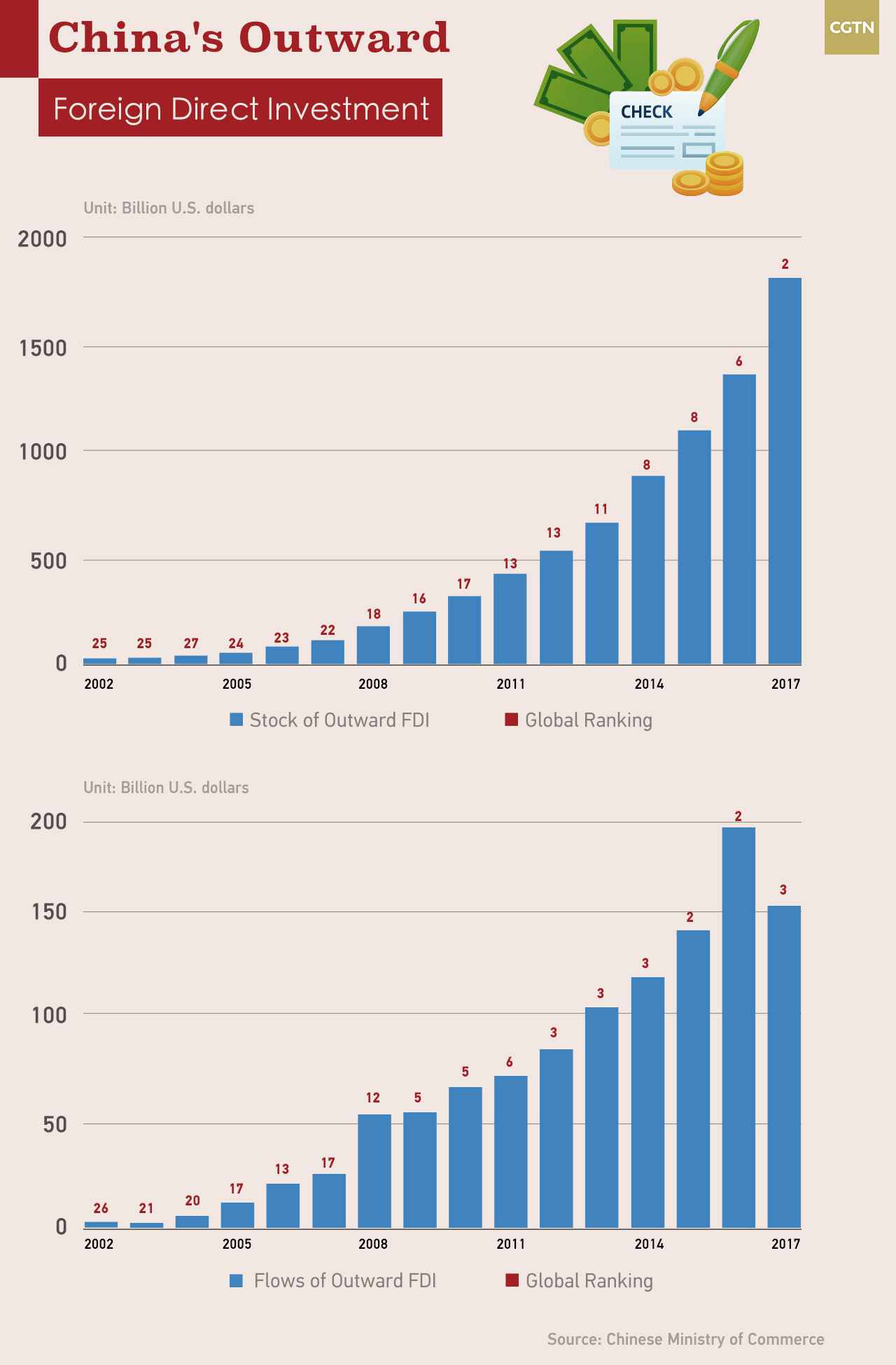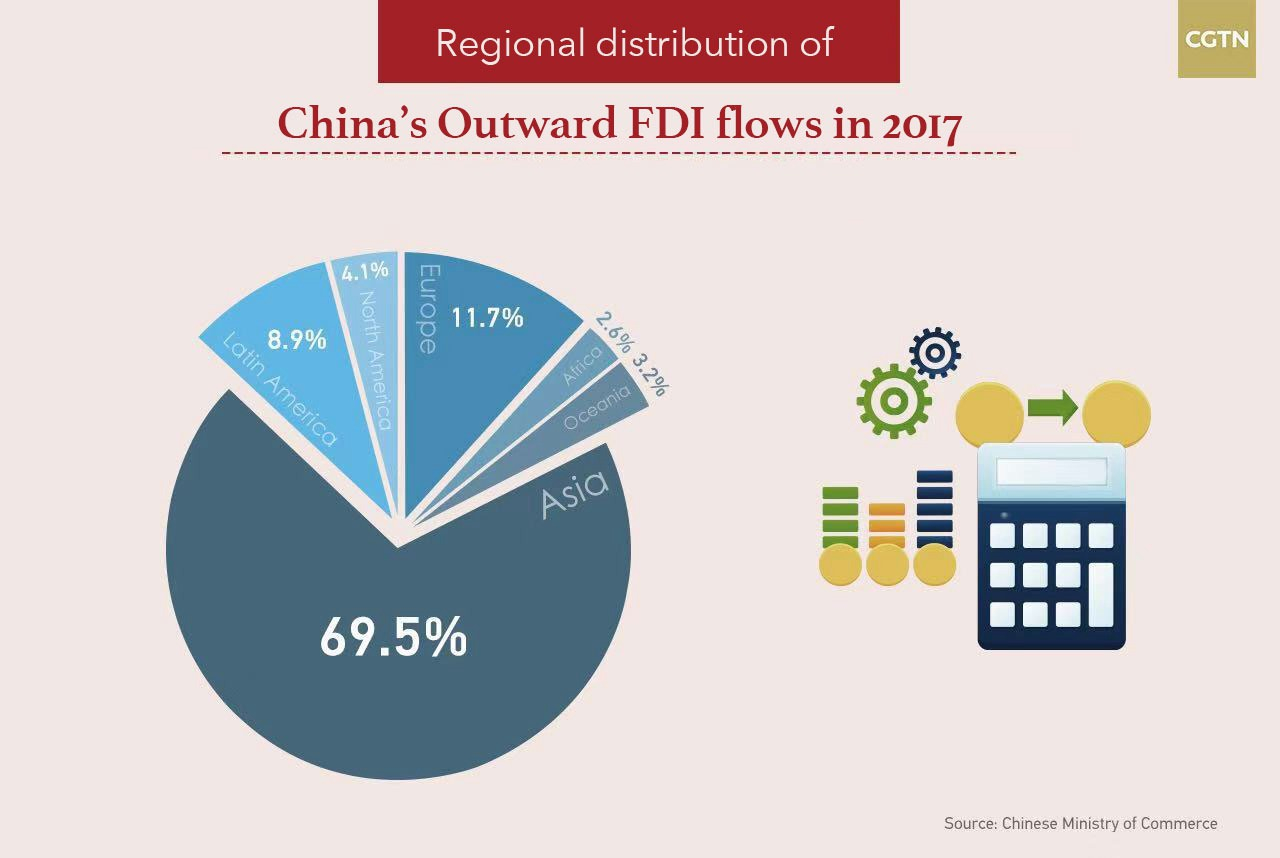
Business
07:24, 13-Dec-2018
China continuously expands opening-up in investment
Updated
06:14, 16-Dec-2018
By Zhang Huimin

China's foreign direct investment (FDI) and outward FDI policies have evolved alongside economic development over the last 40 years.
China's actual use of FDI has increased 60 folds since 1983, to 136.3 billion U.S. dollars in 2017, according to the Ministry of Commerce (MOFCOM). With reported inflows reaching an all-time high, China continued to be the largest FDI recipient among developing countries and the second largest in the world in 2017, accounting for 9.5 percent of the global FDI inflows.

The structure of investment in industries has been optimized as China's actual use of FDI in the tertiary industry has grown significantly, accounting for 68.1 percent of China's total FDI in 2017, compared with a mere increase of FDI in the secondary sector 40 years ago.
Corresponding to China's shift of its development goal towards a more harmonious balanced development, the country is quite open for FDI in almost all manufacturing and most service industries, and the composition of FDI has been improved with more investment in hi-tech industries.
Regional distributions of FDI in China have been more reasonable and balanced in last 40 years.
In the 1980s, China experimented with opening up to foreign investment in selected coastal cities and special economic zones with focus on attracting export-oriented manufacturing FDI.
In 2017, data from the National Bureau of Statistics (NBS) showed that the actual use of FDI in central China saw an increase of 17.1 percent year-on-year to 8.3 billion U.S. dollars, the highest growth among the eastern, central and western regions of China.
The country has also made great progress in optimizing its business environment and stimulating market vitality through improving its laws, regulations and practices affecting how foreign companies invest across sectors, access industrial land in the past four decades.
China, therefore, is now one of the top 50 economies in the world for ease of doing business, according to the World Bank Group in its annual doing-business report on November 1.

The outward FDI flows and stock of China in 2017 accounted for 11.1 percent and 5.9 percent of the global total respectively and China ranked the third among all countries and regions in terms of FDI flows with the average annual growth rate reaching 31.2 percent between 2002 and 2017 due to the country's "going-global" strategy for investment.

In 2017, RMB outward investment was active and income reinvestment accounted for 44 percent of China's outward FDI flows during the same period. Eighty percent of the investment flows to the business services, manufacturing, wholesale and retail, and financial service.
Flows of direct investment to Asia reached 110.04 billion U.S. dollars, accounting for 69.5 percent of the total in 2017, followed by Europe, Latin America, North America, Oceania and Africa.
In addition, Chinese investors made direct investment in nearly 3,000 overseas enterprises in 57 countries along the Belt and Road route with the cumulative investment accounting for 12.7 percent of China outward FDI flows.

SITEMAP
Copyright © 2018 CGTN. Beijing ICP prepared NO.16065310-3
Copyright © 2018 CGTN. Beijing ICP prepared NO.16065310-3